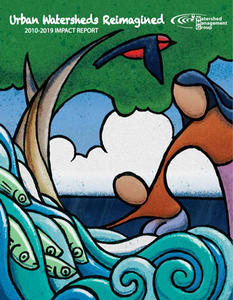We envision a world where the relationship between communities and the environment creates prosperity for all.
WMG’s vision statement, both simple and profound, has been guiding the organization for the last decade. While this vision is more relevant than ever, it can be hard to imagine what this looks like in reality.
Do you relate to our vision statement? What relationship do you and your community have with the environment? Is it one that creates prosperity – for all? And who exactly is included in this “all”?
To shed some light, here is a localized interpretation of our vision statement:
We envision a world where the relationship between the Sonoran Desert and its people creates prosperity for all.This includes all people, plants, animals, land, and water of the United States, Mexico, and Native American nations found in the Sonoran Desert.
In the Sonoran Desert bioregion and Santa Cruz watershed which I call home, there are three nations and multitudinous other beings that make up our incredibly diverse community. While Western people are relative newcomers to the Sonoran Desert, Native Americans have a long-standing relationship with the desert and traditional practices from which we can all learn.
Igniting an Ecology Ethic
When I look back at our work over the last ten years, I see the seeds we planted together to ignite an ecology ethic. We reimagined our urban watersheds as places with abundant clean air and water, fresh food, and natural beauty, all achieved with local resources. In this impact report, we share some of the highlights of the last decade as well as insights into our future strategic direction, and I invite you to continue this journey with us.
If we are to work towards this vision and ignite a widespread ecology ethic, what is the story we need to create moving forward? Our Western story continues to be about extreme climate change, pollution, loss of biodiversity, the increasing gap between the rich and the poor, and people and the environment at odds. This popular narrative is constantly being repeated in the media and con rmed in scienti c studies which can easily lead to apathy and anxiety.
We need to raise our voices and share an empowering story that is hopeful and inspires real change. This is the story that you and WMG have been a part of—helping create space to walk to a different drummer in harmony with the earth. This change is not dif cult, it is just different, and it takes intention and practice.
The early Western conservationists of America helped shape a society that sees an ideal environment as pristine wilderness governed by a Leave No Trace philosophy where people are only visitors in nature. While this is a powerful legacy that has protected much of our public lands, it has also helped create an unnatural dichotomy between people and nature.
It is time for our Western society to evolve and recognize that people have always been part of the natural environment and can manage their environment for greater biodiversity and abundance, as indigenous and other communities have shown.
Over the next decade, WMG will continue to foster education, restoration, and advocacy opportunities, working towards our 50-year goal to restore Tucson’s heritage of owing streams and rivers. Together we can develop an intimate partnership with nature, fully committed and interdependent with each other. With this relationship comes deep satisfaction and prosperity for all.
Sincerely,
Lisa Shipek
Executive Director

